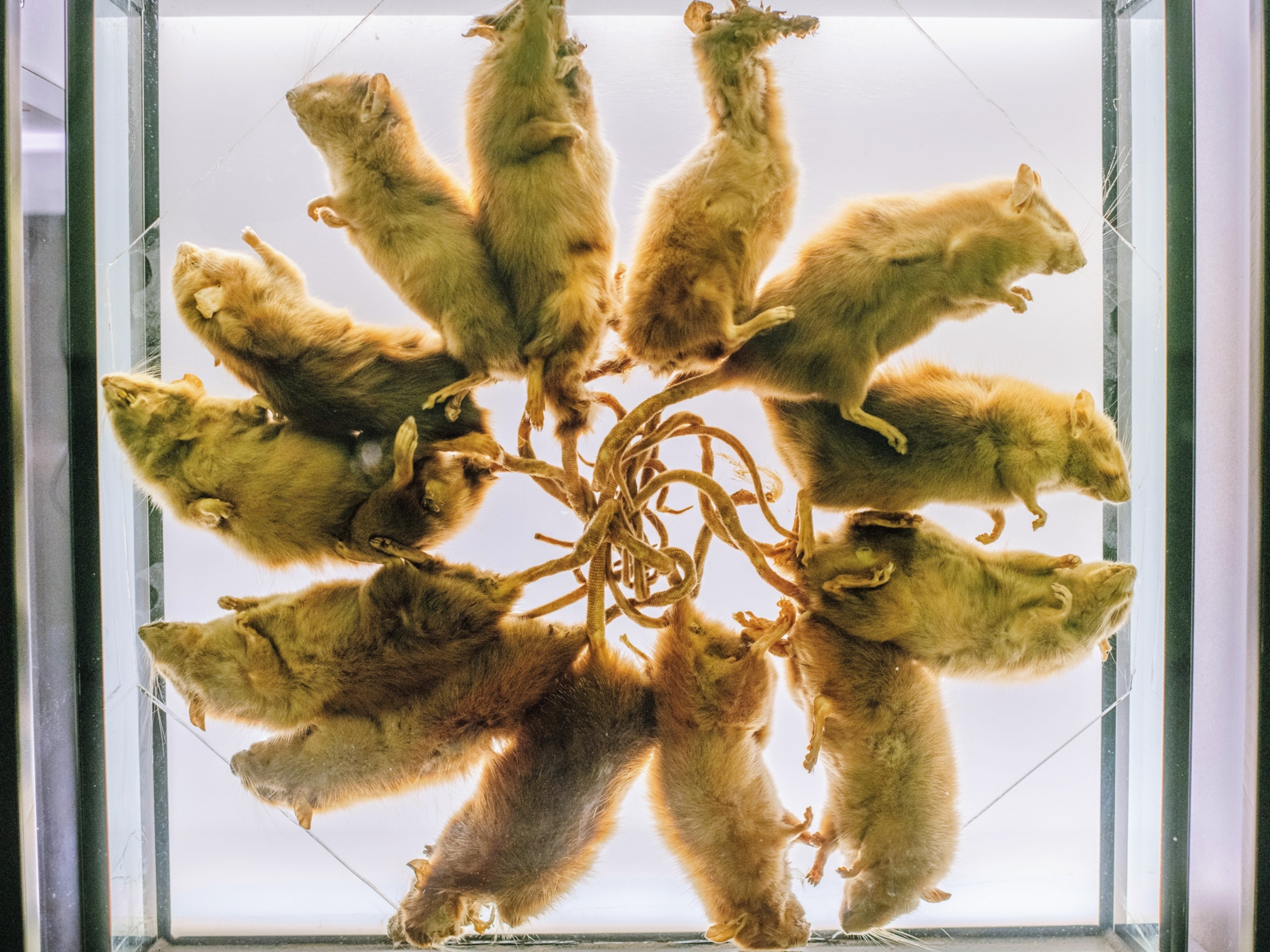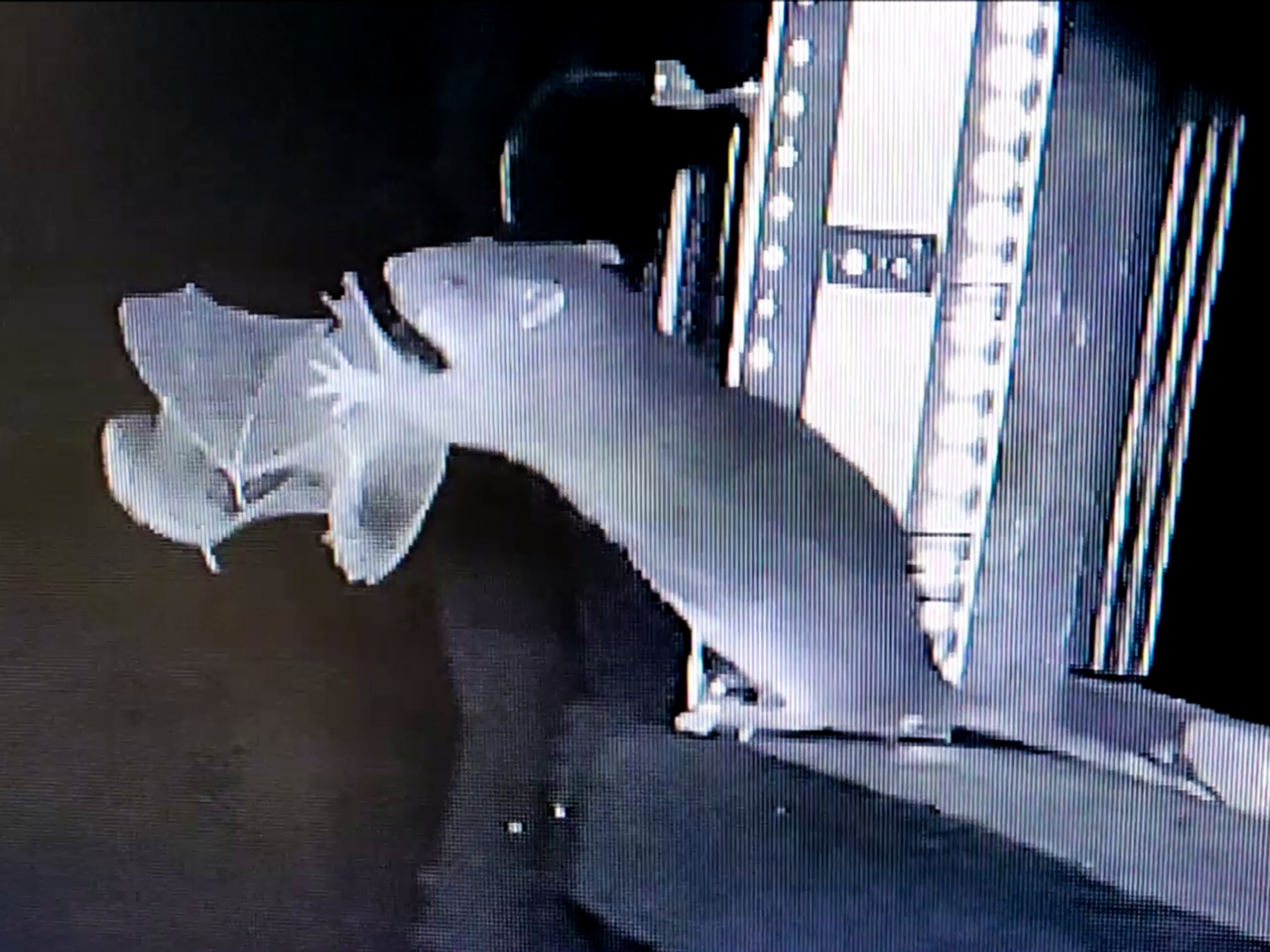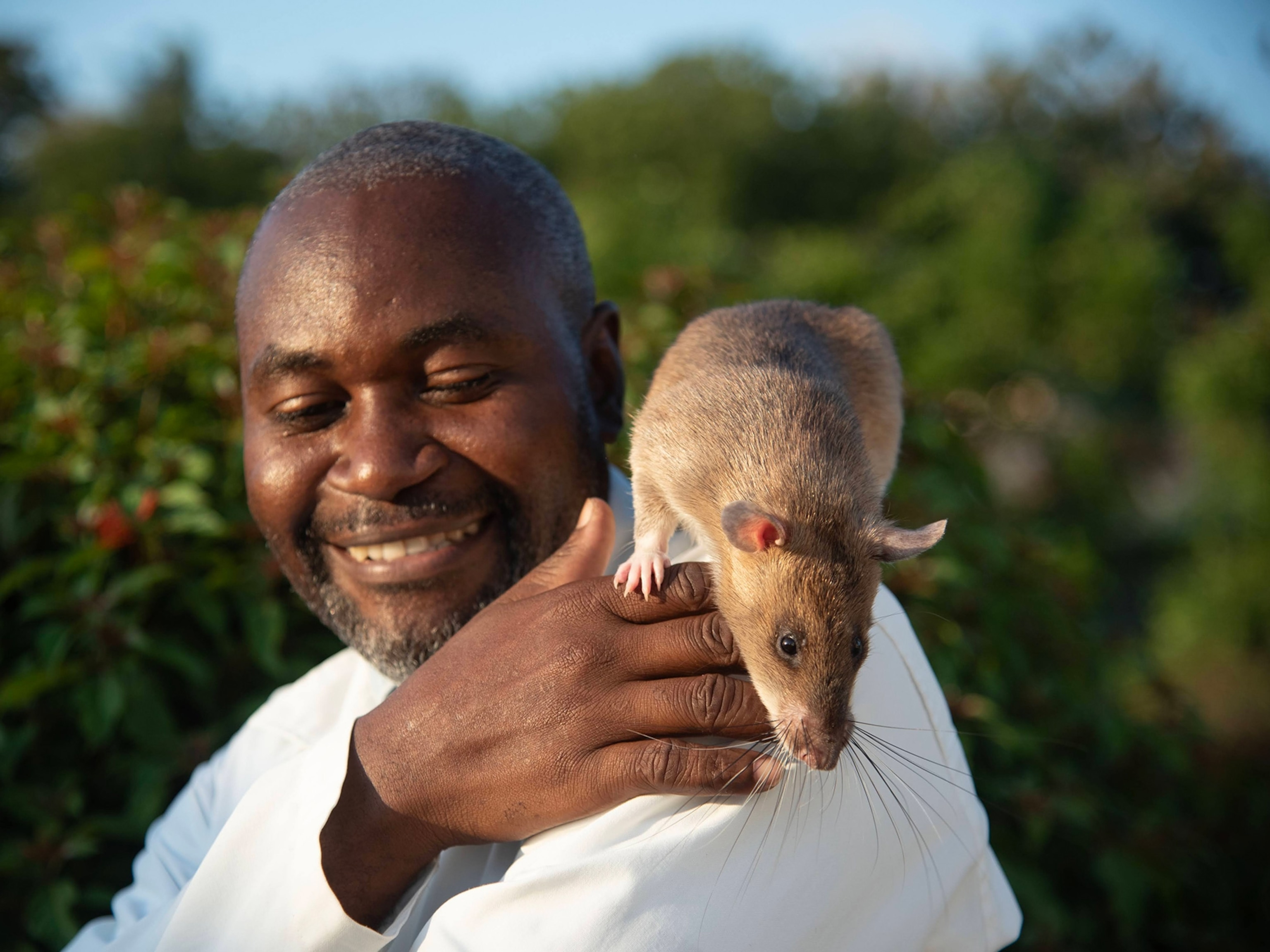Here's What a Rat Looks Like When It's Happy
Now we know what facial expression the rodents make when they’re feeling good.
Do rats feel joy? It can be hard to tell, since they can’t exactly greet us with a grin.
But now, for the first time, scientists have spotted the rat equivalent of a smile—and it’s all in the ears.
They found that happy laboratory rats not only can be literally tickled pink, but they relax their ears so that they hang loosely to the side.
The study is the first to look for signs of positive emotions on rats’ faces, such as pleasure or happiness. Other research on rat facial expressions has focused mainly on pain, showing that suffering rats narrow their eyes or squeeze them shut, flatten their nose and cheeks, and curl their ears forward. There’s even a rat "grimace scale" to measure pain levels. (Related: “The Surprisingly Humanlike Ways Animals Feel Pain”)
Recognizing when an animal is happy or in pain could help people give captive animals a better quality of life, says Luca Melotti, an animal-behavior expert at the University of Bern in Switzerland and an author of the recent study, published in the journal PLOS ONE.
Ultimately, he hopes to develop an automated system for monitoring an animal’s emotional state by watching its expressions.
Cheery Rats
To see if rats have “happy” faces, researchers tickled rats to get them in a good mood and then immediately photographed their facial expressions.
Previous research has shown that rats enjoy being tickled—they’ll run over to a person’s hand to get tickled some more, and emit a “laughing” sound that’s too high-pitched for humans to hear without special equipment.
Melotti has become a “rat-tickling master” and says that he has also seen that individual rats have different personalities; animals that are shy and anxious tend to prefer less rough-and-tumble tickling. (Also see "Rats Show Regret After Wrong Choices, Scientists Say.")
The team compared the facial expressions of rats after being tickled—and thus happy—and after being exposed to an uncomfortable white noise. Ears of the happy rats turned pink due to increased blood flow, though it's not clear if that was because the rats were happy, or just that they got more exercise during tickling.
As for what exactly “happy” feels like to a rat, it’s hard to know precisely. “While it’s likely that animals do feel emotions, it is unknown if they feel them the same way we do,” says Melotti.
What scientists can do is look at what parts of the brain are activated and which chemicals are released during emotional situations, he says. And since mammals share many brain functions and chemistry, emotions that stimulate brains in the same way may be experienced similarly. (Related: "Do Animals Laugh? Tickle Experiments Suggest They Do.")
“These days, there’s no shortage of hard data showing that animals experience rich and deep emotions,” says Marc Bekoff, emeritus professor of animal behavior at the University of Colorado, Boulder.
Show Me How You Feel
Animals use facial expressions mainly to communicate with one another, says Bridget Waller of the United Kingdom's University of Portsmouth. Waller, who was not involved in the recent rat study, has studied facial movements of many animals, from dogs to chimpanzees.
“What we’re finding, across the board, is that there’s more similarity than you might expect,” she says.
For instance, many mammals—including seals, hippos, and laughing humans—use similar open-mouthed expressions when they play with each other. “It shows us the face has become such an important communicative aspect of our bodies for mammals.”
It’s not clear how rats use facial expressions to communicate, says Melotti. The rodents, which are nocturnal and often have to stay connected in darkness, tend to rely on smell and touch more than visual cues.
But there is evidence that rats can read at least one facial expression: pain. A study in 2015 found that rats avoided photographs of other rats grimacing in pain, preferring to hang out near photos of rats in a neutral pose.
“Now we need to apply what we know on behalf of these animals,” says Bekoff, who argues for reducing the use of animals in laboratory research.





